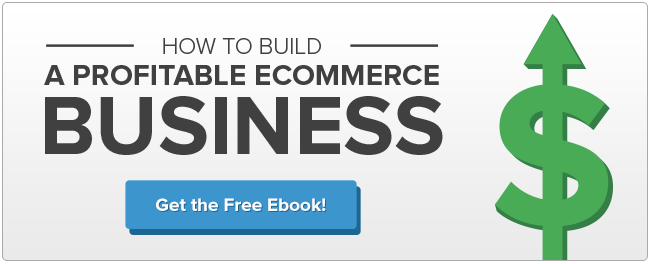 Pricing your products might be one of the hardest decisions you face as an ecommerce business owner. Psychology tests exist to support various strategies, but all have drawbacks that could negatively affect your business in ways others may not be bothered. How can you choose the right pricing strategy for your own particular company and products? In truth, you may have to test a few different options before the right one becomes clear.
Pricing your products might be one of the hardest decisions you face as an ecommerce business owner. Psychology tests exist to support various strategies, but all have drawbacks that could negatively affect your business in ways others may not be bothered. How can you choose the right pricing strategy for your own particular company and products? In truth, you may have to test a few different options before the right one becomes clear.
Once you do settle on prices for your products, you have another challenge ahead of you. Your competition will likely have very similar pricing strategies and maybe even the exact same prices (or better). How can you set your ecommerce company apart from the crowd without underselling? First, let’s look at a few of the strategies you’ll likely use to set your prices.
Markup
Where you might run into some problems with this and MSRP pricing is if you’re using wholesale items to create all new items. Putting a price on new creations, whether they’re mainstream products your company creates, such as clothing or furniture, or one-of-a-kind items made by hand, such as artwork or artisan jewelry, can take on a life of its own. You certainly don’t want to limit yourself to 50% profit in these cases.
Just keep in mind that underselling your products, especially those that may have been handcrafted or are specifically created for your company, could affect buyer perception. Instead of taking the easy road, you may need other pricing strategies.
Anchor Bias
We’ve already talked about anchor bias and why it’s a powerful pricing strategy. In case you missed it, anchor bias is setting the initial price at one point and then the actual sales price at another. Car sales make the most use of this technique, but they’re not the only ones. The result is a customer who always believes he or she got a great deal.
Remember, if the anchor price is too high to be realistic, nothing after that price will seem like a good buy. Be careful not to mark a T-shirt’s original price at $50 and then sell it for $20. A more realistic “deal” might be a shirt with an anchor price of $24.99 and a “sales” price of $19.99.
Luxury Pricing
Sometimes you can get away with charging more for your products than your competitors. The approach must convince buyers that they’re paying for luxury, whether in the materials used, the overall appearance of the product, or simply the brand name itself. There really is no limit to luxury pricing, as car manufacturers, clothing designers, and jewelry retailers can tell you. If your products lend themselves to a luxury air, take advantage of that.
Standing Out from the Crowd
As you can see, the main problem with these particular pricing strategies is that someone else is always willing to take less money. To combat this, you must have an ace up your sleeve. Your best weapon against your competition is great content. Tell your buyers stories about your products, the work that goes into creating them, and even stories about the craftsmen.
Want some examples? How about these bracelets and necklaces made from antique typewriter keys? Can you imagine the stories those typewriters were used to tell before the keys found new life as jewelry? We’re willing to bet those who purchase the pieces would love to have some idea of the history behind each key. Maybe you can’t claim Ernest Hemingway used the particular machine that made their bracelet, but you might have some idea of the history behind some of the pieces.
One huge company that does a great job of telling stories is TOMS Shoes. They even have a tab on their website labeled “stories,” so you know the tales must be good. These highly specialized blog posts tell buyers all about the people their “One for One” campaign helps, the eco-friendly materials they use, the designers for their latest products, and all the other ways this company is helping the world.
How You Can Tell Stories
Maybe you don’t sell handcrafted items or provide for the needy with every item sold. That doesn’t mean you can’t tell stories of your own. Even if you’re providing T-shirts that dozens of other ecommerce companies sell, you can stand out from the crowd. Let buyers know why you sell the shirts you choose. If they’re for a particular niche, explain why you chose that niche. Are you a former gymnast selling T-shirts for current gymnasts? Do you select only the funniest shirts for geeks because you are one yourself?
Use your experiences to tell stories that connect with buyers. If they feel a kinship, they’re more likely to purchase from your company, even if your prices are a bit higher than the competition.
Even with all these tips, you’ll dance around your pricing and agonize about your content for ages. Don’t be afraid to test and then test again. Be prepared to change things up if you feel something isn’t working. Dig deeper into your company for more compelling content. You’ll hit on the perfect balance between pricing and content, and everything will take off.


